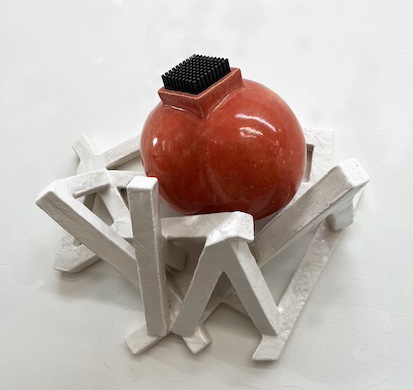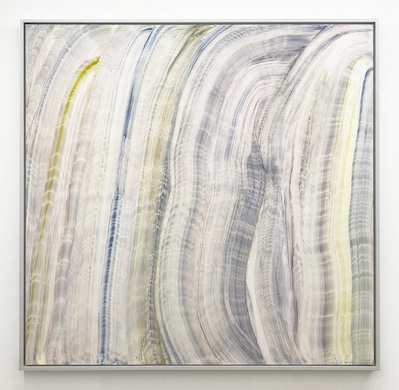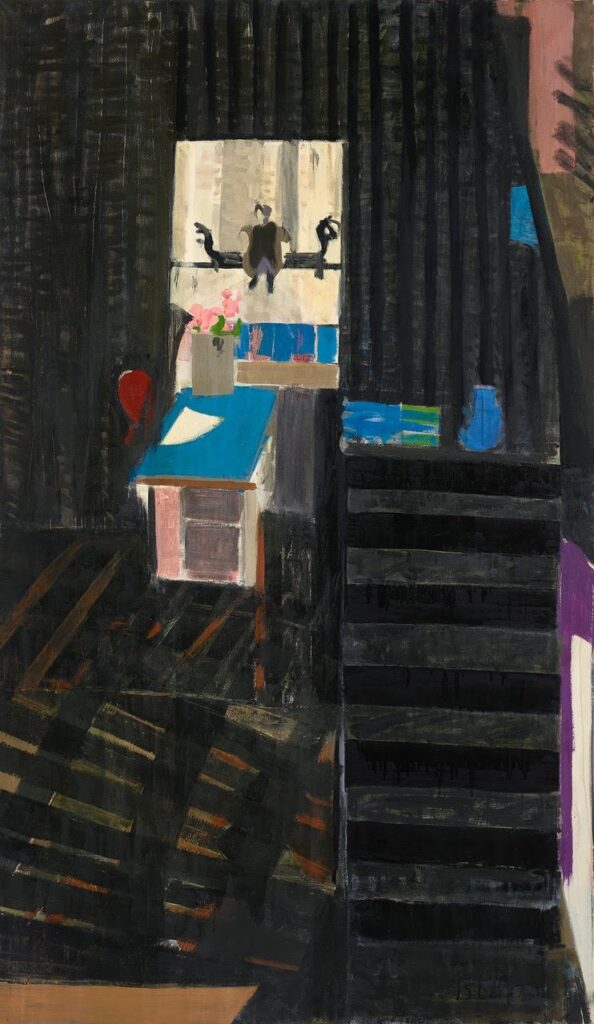
ARTICLE | Now at New York's Galleries, 'Everything in the World' and More
March 23, 2024 - Mario Naves for The Sun
Now at New York’s Galleries, ‘Everything in the World’ and More
By Mario Naves
Friday, March 22, 2024
The exhibition at Chelsea’s Pace Gallery doesn’t capture Thomas Nozkowski at his best. Yet all of the pieces speak to a talent forever scuttling out from under its considerable know-how in the grand search for something true. Here is an art that exhilarates.
‘Thomas Nozkowski: Everything in the World’
Pace, 545 W. 25th St.
Until April 20
‘Pat Lay: Multidimensional’
Elza Kayal Gallery, 368 Broadway, Suite 409
Until April 13
‘Fran O’Neill: A Certain Kind of Light’
Sears-Peyton Gallery, 210 Eleventh Ave., Suite 802
Until April 6
'Biala: Paintings 1946-1986’
Berry Campbell Gallery, 524 W. 26th St.
Until April 13
A display of paintings and sculptures by the American artist Thomas Nozkowski (1944-2019), “Everything in the World,” takes its title from a 1998 article in BOMB Magazine in which the artist was interviewed by the novelist Francine Prose. Pointing to the quirky nature of his modestly scaled, abstract pictures, Nozkowski stated that “everything in the world ties into them, everything that’s crossed your mind while you’re working on it.”
Given the fleeting vagaries of memory, such an endeavor can be foolhardy, particularly with a medium as particular, not to say bedeviling, as oils. Yet within the hard-won interstices of Nozkowski’s heraldic compositions, a strange specificity takes hold: a sense that experience can be embodied by the cobbling together of this blip, that blop, a thingamajig, and a grainy wash of color.
The exhibition at Chelsea’s Pace Gallery doesn’t capture Nozkowski at his best. The aforementioned sculptures are outliers, the never-before-seen large canvases ungainly, and many of the signature 16 x 20″ panels are more exploratory than resolved. Yet all of the pieces speak to a talent forever scuttling out from under its considerable know-how in the grand search for something true. Here is an art that exhilarates.

Human beings or, rather, the compromises to which humankind is invariably confronted, are at the center of “Multidimensional,” an array of prints, collages, and sculptures by Pat Lay at Elza Kayal Gallery. A veteran of the New York City art scene — she was, lest we forget, featured in the 1975 edition of the Whitney Biennial — Ms. Lay has long been exploring the relationship between the technological and the organic, the machine-made and the hand-crafted.
Ms. Lay’s investigation into artificial intelligence and human integrity precedes our current fixation with the topic. She addresses the issue not with alarm or hyperbole, but with subtlety and wit, particularly in a series of supple ceramic biomorphs that are punctuated by repurposed computer parts.
The best of the bunch is “Nesting Bot X2C2” (2024), in which a bulbous form, glazed a rich burnt orange, is propped up by an accumulation of braces colored a milky white. Here the animism at the center of Ms. Lay’s vision is rendered precarious — as if the scaffolding on which her “hybrid taxonomy” snuggles is as sentient and fragile as its charge.

The painter Fran O’Neill, whose sweeping abstractions are the subject of “A Certain Kind of Light” at Sears-Peyton Gallery, recently relocated to a rural outpost in northeastern Australia from the hurly-burly of our fair city. Artists can’t help but inculcate something of the surrounding environs into their work. Is it at all possible to glean this shift of environment within Ms. O’Neill’s canvases?
Her means of applying paint remains unchanged: ribbon-like swaths of color are applied, if I recall correctly, with a forearm swathed in Saran wrap. These strokes unfurl, swirl, bump, and bob within the parameters of the canvas edges, and are marked by a brooding palette thinned to Matisse-like viscosities. The stand-out canvas, “soft magic” (2023), stands apart by downplaying muscle and gesture for atmosphere and mystery. With its silty run of grays, this picture heralds a shift in priorities and, with it, a heartening growth.

licensed by VAGA at Artists Rights Society (ARS), NY, Via Berry Campbell Gallery
“Janice Biala: Paintings, 1946-1986,” an exhibition curated by Jason Andrew at Berry Campbell Gallery, fills out a byway of American modernism with expansive and, at moments, head-snapping aplomb. Biala (1903-2000) was the sister of an undersung New York School painter, Jack Tworkov, the inamorata of the novelist Ford Madox Ford, and the student of Edwin Dickinson, a painter of uncanny power and ghostly portent. This is the fullest accounting of Biala’s work mounted at New York City.
As an overview, the Berry Campbell show is bumpy in momentum — there’s a lot of ground covered here — but, then again, the momentum never flags. A significant chunk of the gallery is dedicated to canvases painted after an extended stay at Paris. “I’d have no use for Paradise,” Biala wrote to her brother, “if it wasn’t like France.” She hung with the in-crowd while living at the City of Light, and their influence was decisive, particularly that of Matisse.
Among the most striking pictures are a suite of interiors painted during the early 1970s, each of which imbues a strain of intimisme with a brash and distinctly American sense of scale. “Pompeii Interior” (1972) offers a gutsy juxtaposition of finely tuned details and brusque swaths of color, while “Homage to Goya” (circa 1975) is a tour-de-force of oblique patterning and the color black employed with rare acuity. “Paintings, 1946-86” is peppered with such moments, and if those don’t qualify it as a must-see, then I don’t know what does.
Back to News
